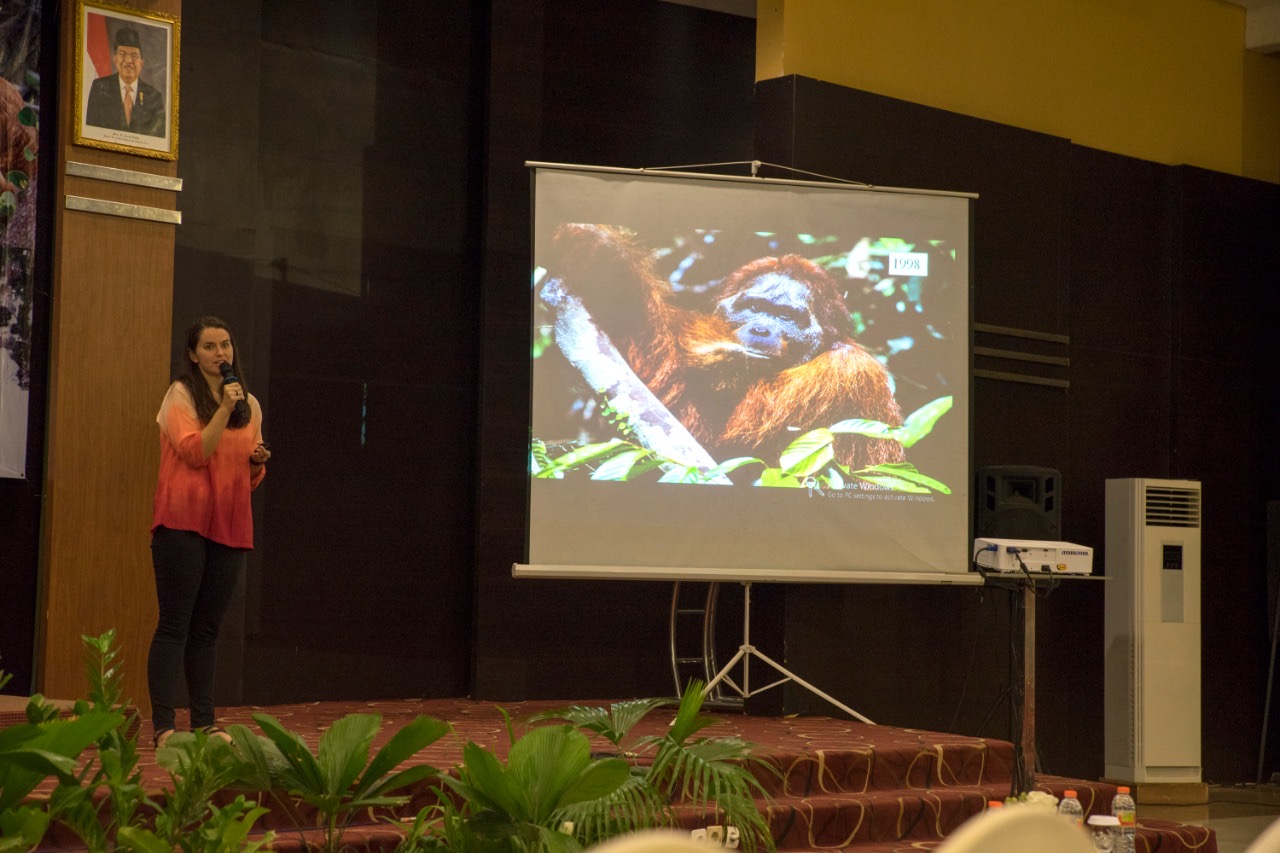By Rinta Islami, GPOCP Lab Assistant
Indonesia has the third largest number of primates in the world, after Brazil and Madagascar, and it is our responsibility to protect and safeguard this huge biodiversity asset. There are many ways that we can protect the existence of our primates, but we first need to be aware of what is happening and any threats to their existence. I got a chance to learn more about Indonesia’s primates at the “Indonesia Primate Symposium and Congress 2019” which is an event to spread awareness and ensure the continued existence of primates in Indonesia. This event is an outlet to share information from many places that are doing research about primates in Indonesia. It can also inform higher authorities on how to protect wildlife and keep ecosystems in balance.

I work as one of the lab assistants at the Cabang Panti Research Station, Gunung Palung National Park, collecting data on wild orangutans. We do research like taking daily behavioral data, processing samples (food, urine, and feces) and identifying parasites. It’s been almost two years since I joined this orangutan research project, and I have seen a lot of wild orangutan behaviors here. But, in this conference I was able to learn a lot of interesting information about orangutans in other places, like outside the national park area, in rehabilitation centers, and even orangutans living in a mining area. One interesting observation that I learned about was from one of the participants from East Kalimantan. She talked about how orangutans in her study area sometime nest in ferns on the ground. For me, this is such an interesting fact because so far this has never happened at Cabang Panti. Probably this is because there is still a good forest here and the orangutans choose to nest on the top of the trees, which is safer and more comfortable for them.

In addition, I learned a lot about the Tapanuli orangutan (Pongo tapanuliensis), the species that in 2017 was found to be different than the other orangutan in Sumatra, Pongo abelli. So far there is little published research on tapanuli orangutans because they are still a new species. I felt very lucky to have been able to learn more about them at this event.

In addition to orangutans, I also learned a lot about different primate species in Indonesia, like long-talied macaques, gibbons, tarsiers, and some species that are not in Gunung Palung because they are endemic to other areas of Indonesia. Many of these species I have never been able to see before, so I felt lucky to be able to learn more about them. This gives me motivation to learn more about the many primates of Indonesia on my own.

I want to give a huge thank you to GPOCP for giving me the opportunity to learn at this conference. Not only was this my first conference, but it was my first trip to the city of Yogyakarta on the island of Java! This event was attended by many different Indonesian and foreign institutions, and gave me the chance to learn about many species of primates, their current status and the threats that they face. It also gave me the opportunity to meet other Indonesian researchers doing work in the field and also researchers from other countries working in Indonesia. One unexpected highlight was that I got to watch a traditional Mentawai dance performed by Mentawai children. Their culture is very in touch with nature, and I thought it was fitting that they performed at this event.






